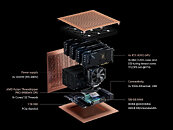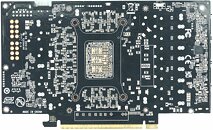Autonomous Inc. Introduces Brainy: The Petaflop AI Workstation
Autonomous Inc., a company dedicated to design and engineer the future of work into the hands of innovators, today announced Brainy, a revolutionary workstation designed to accelerate deep learning and machine learning workflows. Brainy delivers unprecedented AI performance directly to the desktop, empowering researchers, developers, and AI startups to push the boundaries of artificial intelligence.
"Brainy is more than just a machine; it's a partner in innovation," stated Brody Slade, Autonomous' Product Manager. "We're putting petaflop-level AI power within reach, eliminating the bottlenecks and costs associated with cloud-based solutions and truly changing the way AI development is done. It empowers you to not just think—but to think with your machine."
"Brainy is more than just a machine; it's a partner in innovation," stated Brody Slade, Autonomous' Product Manager. "We're putting petaflop-level AI power within reach, eliminating the bottlenecks and costs associated with cloud-based solutions and truly changing the way AI development is done. It empowers you to not just think—but to think with your machine."
































































